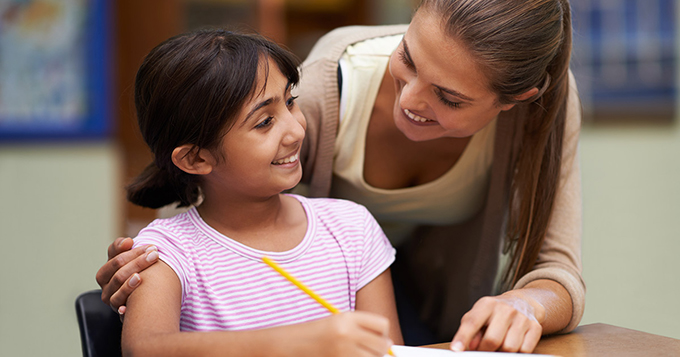 Despite the accumulation of data on the place of emotions and feelings in learning, many actors in the education system still consider that affects have no place in school. A standard remains strong in France: teachers must demonstrate professional distance with students. This standard, for lack of a clear conceptualization, often suggests that one should not establish an emotional bond with one’s students.
Despite the accumulation of data on the place of emotions and feelings in learning, many actors in the education system still consider that affects have no place in school. A standard remains strong in France: teachers must demonstrate professional distance with students. This standard, for lack of a clear conceptualization, often suggests that one should not establish an emotional bond with one’s students.
Yet researchers have accumulated, over the last two decades, an impressive amount of results indicating that the teacher-student relationship, when it allows the establishment of a secure emotional bond, promotes learning and, beyond that, psychosocial development. children and adolescents.
Some general analyzes show that the conclusions of different studies on the subject converge . In particular, the affective relationship between a pupil and a teacher has positive effects – motivation, perseverance and academic success, sense of belonging to the school but also psychosocial adaptation outside of school – and these effects can still occur. observe several years later . It is surprising that the French educational institution has not yet integrated the conclusions of all this work.
Personal involvement
In seeking to assess the attitudes of teachers who support building a safe relationship with students, it is interesting to question their emotional commitment. Is there an interest in loving one’s pupils, in the sense of an altruistic love? By this we mean “an attitude of concern, solicitude and tenderness, as well as a tendency to support, help and understand others” ( Sprecher & Fehr, 2005 ).
Using a version of the altruistic love scale adapted for teachers , it has been possible to observe a link between teachers’ love and the quality of the teacher-student relationship, which is evaluated by teachers. or by students ( Virat, 2014 ). By loving their students, teachers seem likely to positively influence their learning and development.
This is an engaging attitude for teachers. On the cognitive level, love mobilizes important attention resources, both in class and out of interaction with students. Behaviorally, this leads to becoming available and implementing a large number of supportive behaviors.
Above all, love is also an emotionally engaging attitude , which involves having fun spending time with students and being truly affected by their successes or failures.
Collective responsibility
This is not compatible with the notion of professional distance, which students have very clearly understood: they are precisely sensitive to the marks of affection and to all that indicates that the teacher is personally involved in the relationship with the teacher. them. For example, it has been shown that unveiling by sharing one’s own experiences and emotions helps teachers create a secure emotional bond with their students.
More generally, it is the very idea of neutrality that appears curious in the context of the educational relationship. Indeed, the educational relationship – which can be defined as “an asymmetrical relationship where the adult is sensitive and available, where he feels responsible for the development of the child and where he provides help and support, especially on the emotionally, while being concerned about how the child receives this support “- relies on the teacher’s genuine and personal commitment, which can not be achieved without some self-disclosure.
Knowledge about the teacher-student relationship seems to place great responsibility on teachers. They also place great responsibility on the education system and schools, since teacher involvement is largely dependent on the work context.
Thus, standards unfavorable to emotional ties (professional distance, neutrality …), but also large class size, very compartmentalized schedules or a very heavy workload may be the best wishes.
Conversely, significant support from colleagues and the hierarchy, including emotionally, but also the recognition by the institution of the work done or a work organization attentive to relational issues favor the involvement. teachers.
It is thus collectively that the responsibility of building secure emotional relationships between teachers and students, which contribute to the students’ sense of belonging to the school and to society, is assumed.
Benevolence, a fuzzy concept
The recent attention to the idea of benevolence in school and the official prescriptions to make it a professional standard might suggest that things have already changed. However, this is not certain: one may fear that benevolence is revealed as a confused notion, object of multiple uses.
A recent survey suggests that this is a notion “too vague” for the actors of the education system ( Saillot, 2018 ), for whom it could finally as well “say everything that not much” . This is why some propose to better define benevolence, especially to understand what it implies in terms of affective relation.
For example, Reto ( 2017 ) has attempted to recognize an affective dimension to benevolence. However, this dimension would be based on “the teacher’s taking into account his own emotions so that they do not interfere badly in the relationship” and on “the knowledge and recognition of students’ affects”.
The author then mentions “the duty of restraint” and “emotional distance”, faithful to the standard of professional distance. Despite the theorizing efforts made, the concept of benevolence is not yet enough to raise awareness of the emotional issues of teacher-student relationships. You have to add a little love …
Author Bio: Mael Virat is a Researcher in psychology at I-site University Lille Nord Europe (ULNE)
